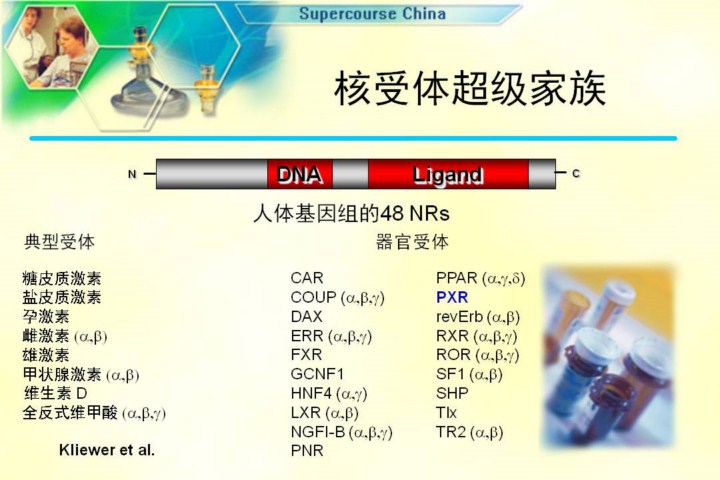| front |1 |2 |3 |4 |5 |6 |7 |8 |9 |10 |11 |12 |13 |14 |15 |16 |17 |18 |19 |20 |21 |22 |23 |24 |25 |26 |27 |28 |29 |review |
 |
Now, if this is true, and if St. Johnís Wort can activate the expression of CYP3A, it has to work by inducing the activity of a nuclear receptor that would be expressed where CYP3A works, in the liver and intestine. It would have to bind to that promoter, and it would have to activate the clearance of endogenous or exogenous chemicals. Thatís exactly what Kliewer showed. He began by looking at the genes that are responsible for coding these regulatory receptors. Thereís a whole family of nuclear receptors, some of which are highly specific and classical, which mediate the activity of steroid hormones of various types, thyroid hormone, and the like. But the human genome contains dozens of other such receptor and coding genes whose functions had not been known and were called orphan receptors. Marching through this, he and many other laboratories have begun to identify the function of these orphan receptors, and he focused on one thatís a receptor for pregnane. He showed that this particular receptor, protein, is expressed in the liver, small intestine and colon by doing a northern blot hybridization for the RNA in coding this protein and not in other tissues, so the locus of expression was in the right place.
核受体超级家族 DNA 配体 人体基因组的48NRs 经典受体 器官受体 糖皮质激素 盐皮质激素 孕激素 雌激素 甲状腺激素 维生素D 全反式维甲酸 |